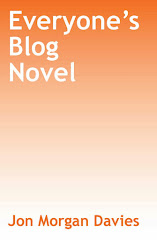This classic western is essentially the tale of a mysterious superhero who rides into "town," does away with the bad guys, and leaves. It is told from the point of view of a kid who witnesses the action, and it's interesting to see how Schaefer manages to get the kid to places where he can witness the important events.
My wife, in her own reading of The Virginian, is the one who first brought up the superhero comparison to westerns, and it made me think a bit about how most of the books I've read so far fall into just that sort of set of cliches. Indeed, there are numerous sites on the internet that claim superhero movies are the new western--and then a whole bunch rebutting that claim (westerns are more varied is the standard reply). But so far, I'd say there's a fairly common throughline with regard to standard western elements. Most involve a super gunslinger, generally mysterious, who saves a woman from some baddies. There are variations, of course. Some involve more than one gunslinger, as in Zane Gray's Riders of the Purple Sage. Some, as in the case of Shane, avoid the woman--the romantic love interest. Here, the gunslinger saves a family.
The work itself is set out on rangeland that is transitioning toward farmland. The resident rancher wants to keep the land free for his cattle to roam, and so he's doing his best to push out the homesteaders who have taken up residence on the vast open federal land with the intention of claiming their 160 acres. Threats of violence and then actual violence follow. The focus of the rancher's attack is the Starret family, because that's where the manliest man of the small and not yet official community resides. When I say, "not yet official," I mean that this is the wild west, land where there is no sherriff to enforce the law. It's neighbor against neighbor. And in that sort of situation, one needs men like Shane to protect the "decent" folk.
The writing here is assured, and the narrative point of view provides a kind of innocence and wonder that works well in what is a kind of tall tale. That gives the work a feeling of genuiness that has seemed lacking in most of the other westerns I've read, so that even if it's much the same story, it feels heartfelt.










